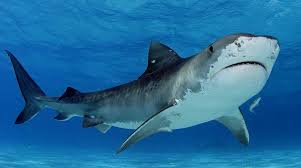Marine scientists have long known that some species of fish possess a unique physiological characteristic — a web of arteries and veins lying very close together — that enables them to raise their internal temperatures higher than that of the water surrounding them.
Now, a new study has demonstrated that species possessing the ability to warm their core — a process called endothermy — are able to swim two and a half times faster than those whose body temperature doesn’t change. In addition, these species, which include some sharks and tunas, can also swim twice as far — ranges comparable to those of warm-blooded animals such as penguins and other marine mammals.
“The cost of moving faster and farther is high so there has to be an ecological reason that outweighs the physiological expenditure,” Caselle said. “These endothermic fishes are putting a lot more energy into each unit of movement than their cold-blooded counterparts are.
To conduct the study, to several sharks in different locations around the world. The researchers’ analysis suggests that warmer “red” muscle endothermy permits speedier cruising and greater endurance, which in turn enables these fishes to swim long distances relatively quickly. This characteristic, the marine scientists speculate, allows the fishes to take advantage of seasonally variable food sources.
Of those examined in the study, four shark species are endothermic — salmon, porbeagle, white and shortfin mako — as are five species of tuna — yellow fin, southern bluefin, Atlantic bluefin, Pacific bluefin and albacore. One species in particular, the white shark, has a migration range greater than that of the humpback whale.
Of specific interest, Caselle noted, is the fact that endothermy evolved independently in these distinctly different groups of fishes. The two taxonomic groups diverged more than 450 million years ago, and their common ancestor was most likely cold-blooded. “The mechanisms of convergent evolution aren’t always the same, although in this case they pretty much are,” Caselle said. “There are only a limited number of ways a fish can rewire.
“This research begins to shed light on possible reasons why these endothermic fish evolved in this way,” Caselle concluded. “Our paper contains almost every piece of electronically recorded information in the literature right now — and that’s not a lot. We’d like to be able to expand the use of sensor-captured data to other groups of fishes in order to build a dataset we could analyze to see what different species are doing in terms of their movements and speed.
Source: Science Daily
N.H.Khider

